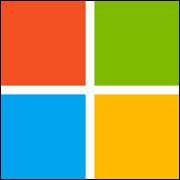
As the anticipated April 2015 launch of Threshold, the next major version of Windows OS, draws closer, Microsoft reportedly is tightening up its features.
One of the OS Group’s main goals in thedesign and development of Threshold is to make it more palatable to Windows 7 users, according to ZDNet.
New features aimed at desktop users who may or may not use touch input reportedly are being included. The new OS may or may not be called “Windows 9,” because Microsoft may want to shake off the taint of Windows 8, which did not quite meet its expectations for reviving PC sales.
“If this is the release that returns the Start menu and adds windowing for modern apps, I’d say it’s a win for both Windows 7 users and users of Windows systems without touch in general, Wes Miller, an analyst at Directions on Microsoft, told TechNewsWorld.
On the Threshold
The Threshold OS apparently will look and work differently, based on the hardware it runs on.
Users running it on a desktop or laptop will get a version that puts the Windows Desktop, geared to Win32 and legacy apps, in the forefront, ZDNet reported. Those with two-in-one devices, like the Microsoft Surface Pro, will get a version that supports switching between the Windows mode used on desktops and the Metro-style mode used on tablets, depending on whether a keyboard is connected.
“I expect to see the OS evolving to be more tolerant of desktop users while not compromising tablets and touch-enabled screens,” Miller said. It likely will let desktop users return to the Start screen and full-screen modern applications if they want to.
“Any return to a more familiar desktop for users without touch is a good move, especially if done in such a way that it doesn’t harm the existing touch-based experience for tablets,” Miller noted.
Going Mobile
A version of Threshold for tablets and smartphones also is in the works, but it will not have a desktop environment, ZDNet reported. However, it apparently will support apps running side by side.
A mobile version that converges the needs of tablets and smartphones “has to come out soon to compete properly with the iOS and Android ecosystems,” Al Hilwa, a program director at IDC Seattle, told TechNewsWorld. “Both hybridize tablets and phones more gracefully than Windows.”
This mobile version of Threshold reportedly will work on ARM-based Windows Phones and Surface tablets, and possibly Intel Atom-based tablets.
Whether it will replace Windows Phone is not yet clear.
“It’s all conjecture at this point, but I do expect an overall convergence of Windows Phone and Windows RT in particular,” Directions on Microsoft’s Miller said. “It will likely continue to move the focus away from the legacy desktop as contained in Windows RT, to be all in with a modern user interface.”
Windows 8 Fallout
IDC blamed 2013’s slowing PC sales on Windows 8.
“Windows 8 was an experiment in convergence that was both too drastically different for existing users and too complex for new users,” IDC’s Hilwa remarked.
“Most importantly, it did not evolve the desktop in a meaningful way and did not really integrate the desktop successfully with touch,” he continued.
“Windows Vista and Windows 8 have both tarnished the brand in their respective scenarios,” Miller commented. “Much like Windows 8, Vista was a subpar experience on hardware that was not designed to make the most of it.”
Saving Face
Microsoft needs a rethinking of the Windows OS “that respects the value and power of the desktop and invests in its evolution,” Hilwa said.
“Things should be easier and more productive on the desktop, but not necessarily entirely tablet-like,” he suggested.
Threshold could help Microsoft save face — or not. “The one good thing going for [Microsoft] is that expectations are low,” said Hilwa, “though the stakes remain high for the overall Windows ecosystem.”























































I have to say that as an IT professional, I was not impressed with Windows 8. Windows 8.1 However was a much needed improvement. For medium sized businesses, like the one I work for, we had to completely skip the Windows 8 "experiment" but we are buying some Surface Pro 3 with 8.1 because of their improvements. I really hope Microsoft gets it right with "Threshold" or we will be staying on older OSes. Who knows, maybe in ten years Linux will get the developer support it needs and become the OS of choice. Personally I think Microsoft does so many things on all its OS platforms that nobody can replicate. Server 2012R2 is the best server OS ever made by any company, I dare anyone to challenge that statement. Here’s to hoping Microsoft won’t screw up in the next 5 years!